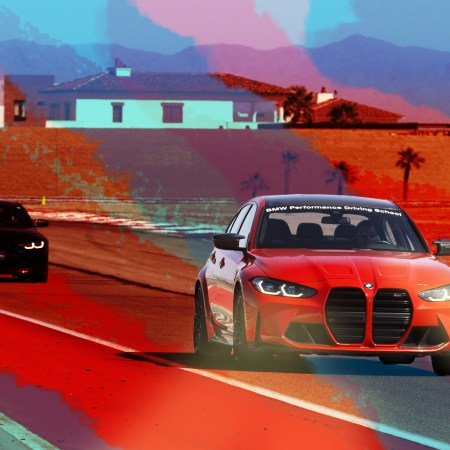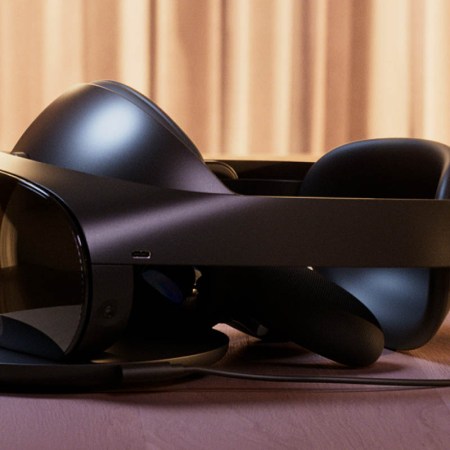This mean, steely beast might be minimal on the outside, but under the surface, it’s one of the most complex motorcycles ever built.
For starters, it was designed with virtual reality. A collaboration between production agency Greydev, BMW aftermarket powerhouse Wunderlich and industrial designer Christian Zanzotti, the Digimoto BMW R1200R maintains its original engine, but little else was left intact. The rest of the components were 3D-scanned and inserted into a virtual environment, allowing the designer to test out the construct via VR goggles before it existed in the physical. From there, traditional techniques were used to turn a digital dream into a reality. The builders welded aluminum sheets together for the tank and hand-formed the trellis frame and subframe. Then Zanzotti and Greydev used advanced production tech to swiftly prototype the headlights, cooling fins, tail end and seat.
Our favorite feature, though? The bike has none of the traditional dash-mounted gauges that relay vital feedback to the rider. Instead, a high-tech headlight containing a sensor panel records and transmits all that straight to the driver by way of a head-up display in the visor of a specially designed helmet.
Naturally, we dialed them up to see how, when or where we could get our hands on this thing.
Can we buy this?
“No it’s not for sale.”
Is it street-legal?
“Not really. It’s a concept.”
Does it drive?
“Yes, it rides like hell. But of course, as this would be illegal, we don’t do that.”
Can we buy it if the price does not matter?
“Ah, now we talk. Please contact us.”
Can we borrow Digimoto for our next Hollywood movie?
“Depends on the movie. Just get in touch with us.”
Sick.
Anyone got a spec script they can offer up?
This article was featured in the InsideHook newsletter. Sign up now.





















